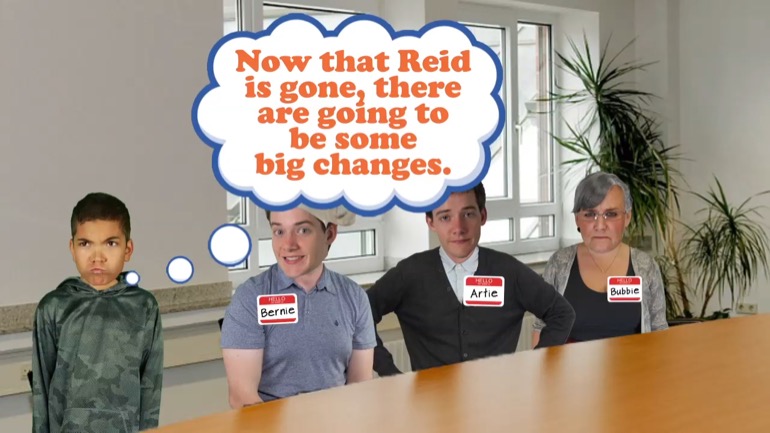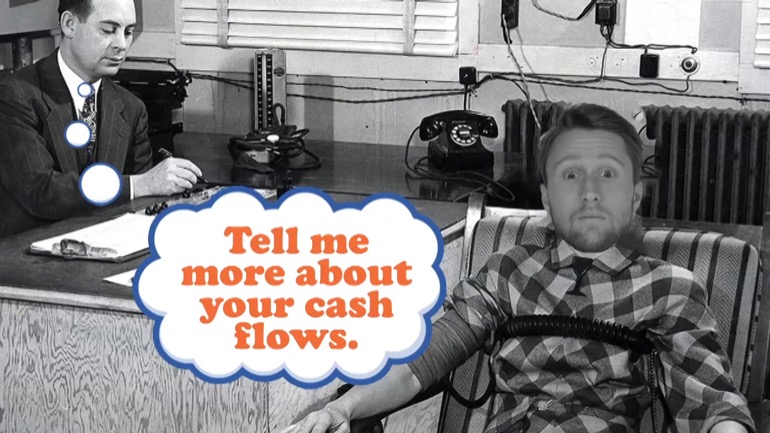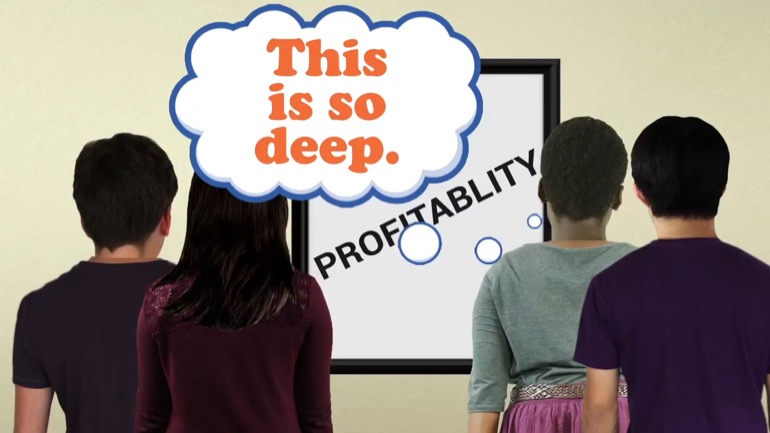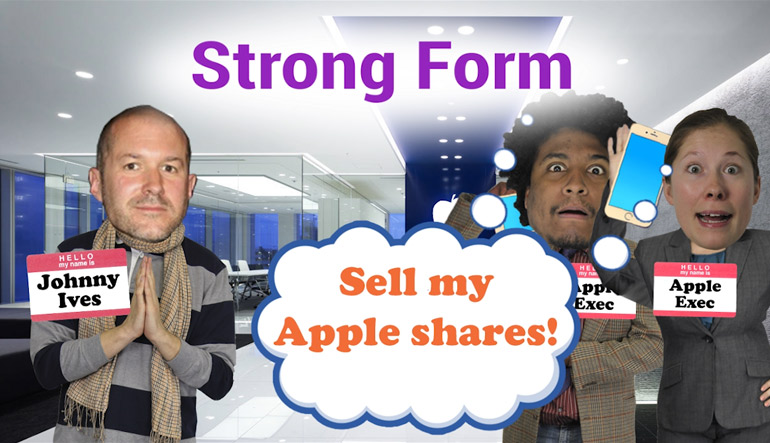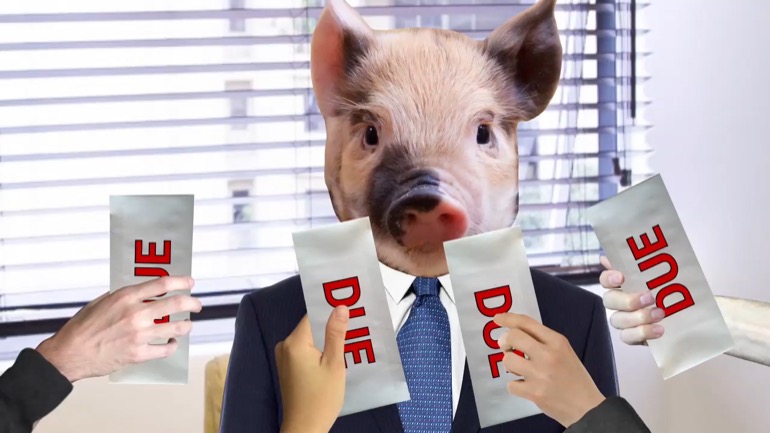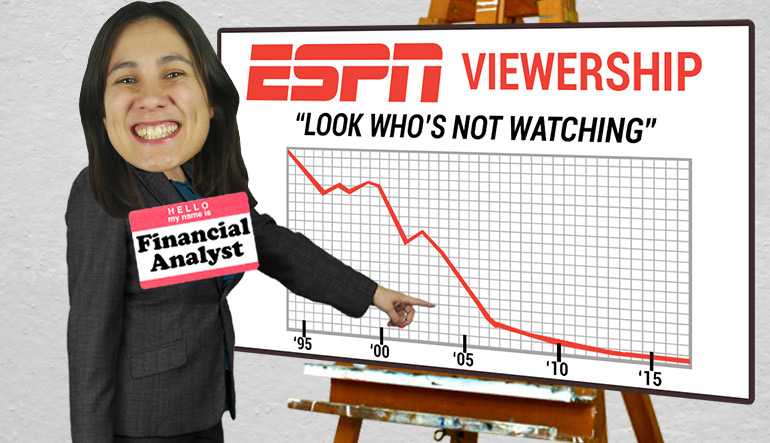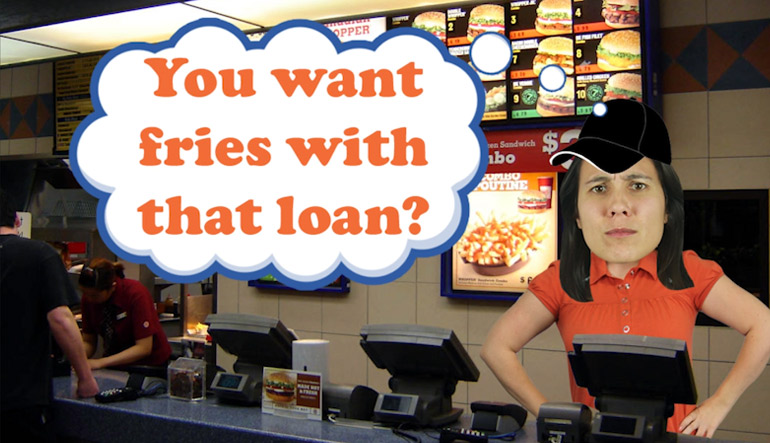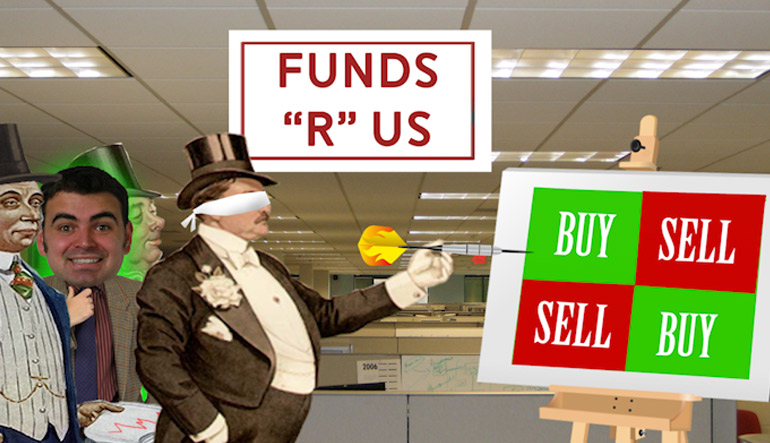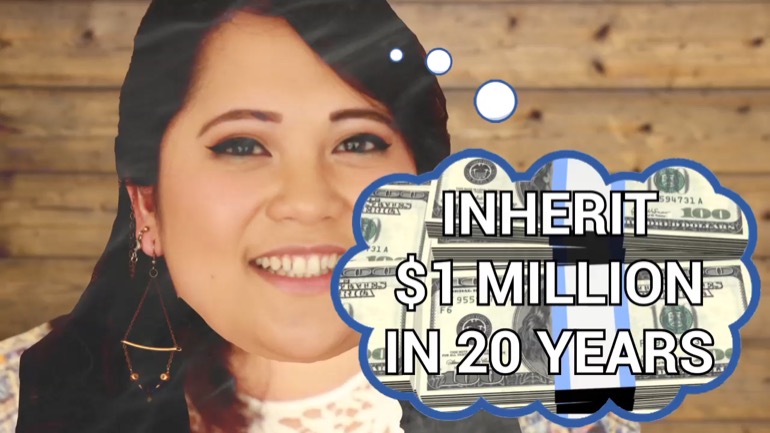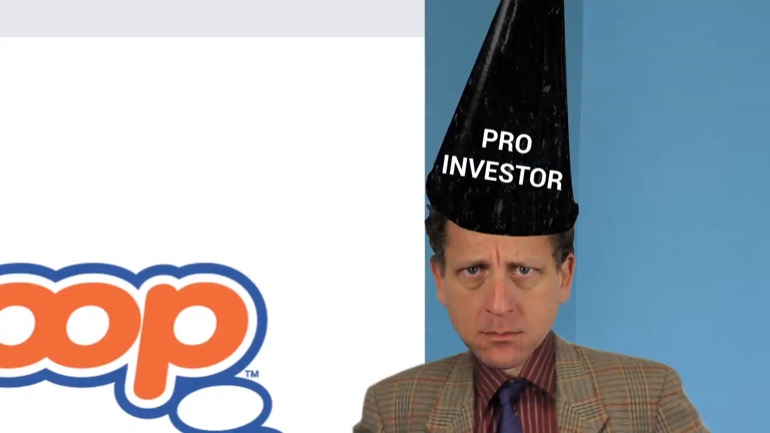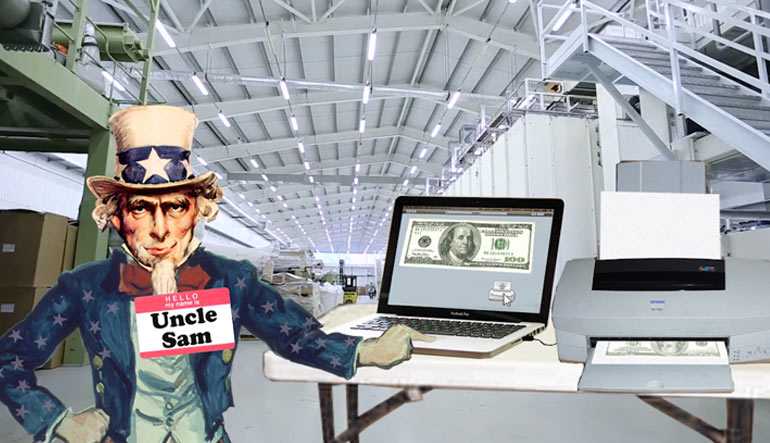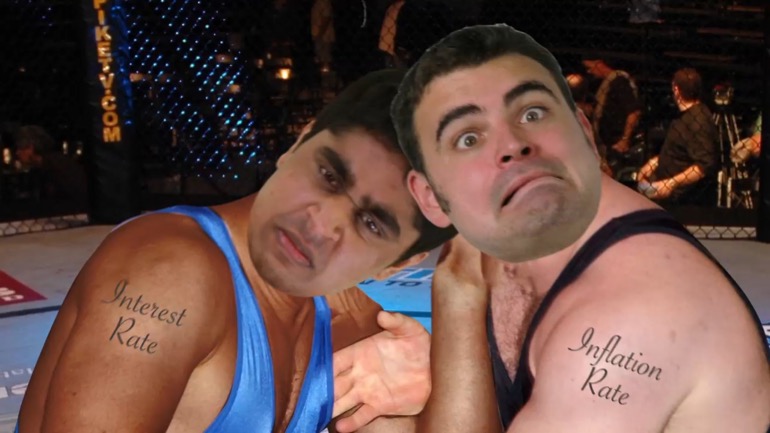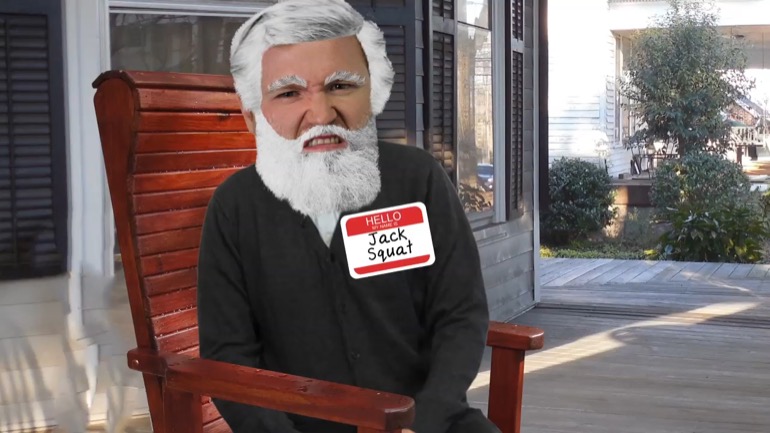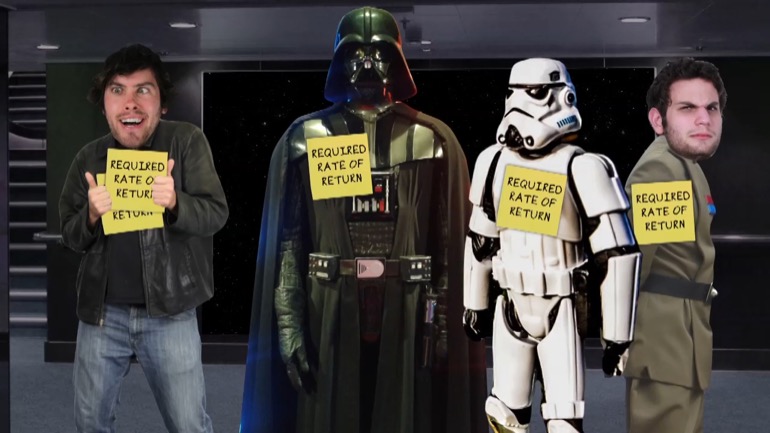ShmoopTube
Where Monty Python meets your 10th grade teacher.
Search Thousands of Shmoop Videos
Principles of Finance Videos 166 videos
How is a company... born? Can it be performed via C-section? Is there a midwife present? Do its parents get in a fight over what to name it? In thi...
Company Formation, Structure, and Inception: Unit Intro. Sorry, Leo DiCaprio fans—we're not going to be breaking down the plot of Inception. We'r...
Okay, so you want to be a company financial manager. It's basically up to you to make money for the shareholders. It would also be swell if you mad...
Principles of Finance: Unit 1, The Five Principles of Finance 107 Views
Share It!
Description:
What are the five principles of finance? We're talking the time value of money, the relationship between risk and reward, and... you'll have to watch the vid for the others.
Transcript
- 00:00
Principles of Finance, a la Shmoop. The five principles of Finance. Why is
- 00:07
there always a number like this, like the Four Horsemen of the Apocalypse, the six
- 00:12
wives, of Henry the eighth's, the three musketeers, the seven Habits of Highly
- 00:17
Effective People. Finance more, or less has five wheels under its chassis and [car with five wheels]
- 00:22
that fifth wheel sort of explains why the markets and the economy so often you
Full Transcript
- 00:26
know go off the rails. Anyway just know these five bad boys. Here we go.
- 00:30
Principal one, the time value of money. Mantra, a dollar today is worth more than
- 00:36
a dollar tomorrow. Why? Well because you can in theory, always invest that dollar
- 00:41
and get a positive financial return from that investment. If you picked quote, the
- 00:45
safest bet in the world, unquote. Well by investing in American Treasury bills,
- 00:50
which are guaranteed more, or less by the American government's ability to tax its
- 00:54
hardworking people. Well then you'd get a small return on your [man talking in dark room]
- 00:59
investment. For a more practical example think about you investing a thousand
- 01:03
bucks to buy a t-bill yielding three percent.
- 01:05
Well bonds like this usually pay twice a year, so six months later you'd get what?
- 01:09
Well if your total interest per year was three percent, on a grand invested then
- 01:13
you'd get thirty bucks, a year, for doing a whole lot of nothing. Other than let[money in bank vault with American flag]
- 01:17
your grand sit with the Gov. So twice a year you'd get a check for fifteen bucks.
- 01:21
But it's about two lattes, but it's a positive investment return that's pretty
- 01:25
much guaranteed. Silly example, but there were about a hundred eighty two point
- 01:29
five days, that made up the six months, that yielded to you, your $15. So how much
- 01:35
did you earn per day, based on that figure? Well about fifteen dollars,
- 01:38
divided by one hundred eighty point five, or about eight cents a day. Well the gist
- 01:42
here is that, the thousand dollars today, was worth more than the thousand dollars [January calendar]
- 01:47
tomorrow. That is invested in the form of a very safe 3% T bill. The dollar today was
- 01:53
worth about eight cents more than the dollar tomorrow.
- 01:56
Well time values a pretty dull concept when it's three percent a year, on a
- 02:00
relatively small amount of money. But let's calculate something more fun. Okay,
- 02:04
our idea of fun, sorry. We netted a hundred million dollars after tax, after
- 02:08
an IPO of a company we founded. We want some toys and bling. First off we want
- 02:13
to shrink the world, so let's buy a jet. A
- 02:15
shiny new cj3, cost about twelve million dollars and another fortune to operate,
- 02:21
to ensure, to store, to gas up, to pilot and so on, but don't let's ignore all that. So
- 02:27
we plan to keep it 20 years. After 20 years, the plane will be worth, [jet flying]
- 02:30
not much. Figure four million dollars, at auction, so we'll lose eight million
- 02:34
dollars over twenty years, or four hundred grand a year, so yeah that jet
- 02:38
was expensive. But it gets way, way, worse. With a 20 year time frame, we could have
- 02:43
felt pretty good about putting our money in the stock market in equities, in the
- 02:47
form of an index fund. Over the hundred and fifty or so years that the modern
- 02:51
stock market has been tracked over most 20-year periods the markets gone up,
- 02:56
about eight, or nine percent. And with dividends reinvested, maybe a little [stock graph incline]
- 03:00
bit more. And yes there were bad periods where performance was flattish, but there
- 03:03
were also really good periods, where performance was way better than that
- 03:07
eight or nine percent figure. So let's just pick the middle of the curve for
- 03:10
now. If all we did with our twelve million dollars, was put it in the market
- 03:13
and get it back 20 years later in a bad stock market era. Well we'd have done
- 03:18
way better financially, than if we had bought that new jet outright. Right? We
- 03:22
lost eight million dollars for the pleasure, plus maintenance, gas and risk
- 03:26
and the comparable cost to fly commercial would have been massively [man in commercial airline]
- 03:29
less, that we won't even bother with that now. Let's bet that the market does what
- 03:34
it usually does on average over this 20 year period. It goes up 8.2% a year, well
- 03:39
had we invested in our index fund, which charged us point two percent a year for
- 03:43
maintaining that index. We would have had a ton more dough.
- 03:47
How much more? Well the magic formula, take the dollar amount you invested and
- 03:50
multiply it by one, plus the rate of return and take that quantity to the power of years.
- 03:55
Looks like this, in this case the formula would be, twelve million dollars, times [man presenting in dark room]
- 03:59
one, plus point zero eight, to the 20th power and note that the market went up
- 04:05
8.2% a year, but we only kept eight point zero percent of it because we had point
- 04:10
two percent a year in fees. This is a big deal when you look at mutual funds which
- 04:14
carry are R rated fees and then hedge funds which carry triple X's, but we'll
- 04:19
get into that later. Anyway, 1.08 to the twentieth powers about five, so gulp if
- 04:23
you would put your twelve million dollars into an index [man presenting in conference room]
- 04:26
fund twenty years later, it would be worth sixty million dollars. Instead of the
- 04:31
four million dollars, you got. And yes that's the right math we checked it twice.
- 04:35
Jets are nearly the worst investment you can make and life's short and the super wealthy,
- 04:39
well they want, what they want. As Marie Antoinette said, let them eat jet fuel.
- 04:44
Well one other note, worth noting here, is a cute little formula called the rule of
- 04:48
72. Read it, know it, know how to use it, it saves lives.
- 04:51
Well it doesn't really save lives, but it'll make yours a lot better,
- 04:54
our lawyers made us say this. All right moving on, principle two, risk and reward
- 04:58
are related. Popcorn question, why do you get eight percent returns from the stock [movie theater]
- 05:03
market in equities and you only get three percent from safe bonds. Well a
- 05:07
bunch of things affect rates, of investment returns. But the biggest issue
- 05:11
revolves, around whether you'll get your money back, or not. And/or a positive
- 05:15
multiple of your money back over time. Okay here's a chart of bond performance,
- 05:21
it's flat. Basically it's a dead man's pulse. Very few bonds don't pay back what [money on table]
- 05:26
they promised and yes a few go bust but compared with equities, bonds are a
- 05:30
massively safer investment. But you pay a big price for that safety over time. That
- 05:35
twelve million dollar jet money, invested in a bond over 20 years at 3%, well
- 05:40
ignoring taxes, which are also generally worse for bonds, than stocks. Well it gives
- 05:44
you just about twenty one point six million. Way better than owning that jet
- 05:48
and think about how many first-class commercial tickets that dough would have
- 05:51
bought. He had a lot of pretzels. Anyway with stocks, you turned your dough into
- 05:55
sixty million dollars in twenty years, so for that bond safety you just paid [finance chart]
- 05:59
almost forty million dollars, in net difference over those twenty years for
- 06:04
that safety. How's that feel? You feel safe for now, or just less wealthy? Well
- 06:09
things could have gone the other way, had you bought at the worst time. Say
- 06:13
late 1973, held them to the worst period in 1993, with dividends reinvested. Well
- 06:19
you would have compounded at only about six percent, about ten percent with
- 06:23
dividends reinvested, albeit well with a lot of headache.
- 06:26
Look at how stocks declined from 73, to 83, brutal. But also look how dividend [stock graph chart]
- 06:32
rates went up. That is when companies stocks declined,
- 06:36
they don't usually just cut their dividends, they keep paying them. And
- 06:39
investors who need and/or want the cash returned to them from their initial
- 06:42
investments are happy to get checks four times a year, because while equity
- 06:46
dividends are paid quarterly, unlike bonds, which are paid twice a year. But
- 06:50
look at the chart, could you have stomached being down almost 50 percent
- 06:54
from 73 to 79? Would you have panicked at just the [bond action site]
- 06:58
wrong time and sold all of your stocks and moved into bonds at just the wrong
- 07:02
time? Well taking on risk is a lot about personality and liquidity, ie
- 07:06
you don't need that investment to be cashed out tomorrow and well it's about
- 07:11
courage too. But over time as you take bigger risk you would expect to be
- 07:14
rewarded incrementally, for taking on that risk. And there are times to not
- 07:18
take a lot of risk, of course as well. Like if you're planning on buying a home [pink house]
- 07:22
in six months, well you likely don't want to be invested in the market. In a bad
- 07:26
six month period, things can go down a lot. The big fat hairy idea here, well
- 07:31
it's that time bails you out of risk when you're investing in stocks. If you
- 07:35
can hold an investment a very long time, historically it's made no sense to own
- 07:40
bonds instead of stocks. All right moving on principle three, the market as a
- 07:44
popularity contest, versus being a weighing machine. Warren Buffett, the [man walking out of pool]
- 07:48
Michael Phelps of public investing said, in the short term the market is a
- 07:52
popularity contest. In the long term it's a weighing machine. Well what on earth
- 07:57
does that mean? Well he's referring to short-term and long-term thinking in
- 08:01
investing and Buffett is a famously long-term greedy investor. That is
- 08:05
Buffett likes to buy things and stick them in a drawer for decades, not weeks.
- 08:09
Over time market prices are truth, they are accurate, they are honest. But in
- 08:15
short periods of time the market can go crazy. Later in this course we'll get
- 08:19
into the internet bubble of the late 1990s, where companies would go public on
- 08:22
very little revenue, with valuations of billions of dollars, many of them died, or [graveyard with tombstones]
- 08:27
simply had aweful investing returns, due to the schmuck, or speculative buyers who
- 08:31
bought them. A few did really well, a little company called Google's one of
- 08:35
them, Amazon's another, eBay, PayPal another. But most ended up doing poorly if
- 08:40
you held them 20 years. Conversely toward the end of the
- 08:42
2008 nine mortgage crisis, a ton of companies were trading the other way, Ie
- 08:47
crazy cheap. And these were stable always gonna be there companies, like
- 08:52
coca-cola and Pepsi. Which traded down to below, ten times earnings at one point. [soda market graph chart]
- 08:56
Like the market in the short term, was telling you that the odds of people
- 09:00
drinking drinks, not just soft drinks was kind of an iffy proposition.
- 09:04
Well things normalized, with Coke and Pepsi trading at right around there
- 09:07
adjusted historical price, to earnings ratios in the low 20s, eventually. Key
- 09:12
takeaway, be sensitive to the sentiment the market is feeding you, but when you
- 09:16
buy stocks for the long haul just buy good companies and good industries, right.
- 09:20
Even if you overpay in the short run, good companies bail you out in the long
- 09:25
run. All right, principle four, cash is king. Ever hear of Hollywood accounting, [Hollywood sign]
- 09:30
profits, well they don't exist when the talent in the movie participates, or gets
- 09:35
a percentage of them. Let's go through a simple example with something a bit more
- 09:38
tangible. The company, We're Nuts about lug Nuts, has four hundred million
- 09:42
dollars in revenues, in a given year, and 300 million dollars in expenses. Leaving
- 09:45
a hundred million dollars, to be taxed. Tack on a 30 percent tax rate and after
- 09:49
30 million dollars in taxes, the company is left with seventy million bucks in
- 09:53
earnings. Well the shady mystical figure, in all of [man silhouette]
- 09:56
these calculations is the notional definition of expenses. Let's say the
- 10:00
company spent three hundred million dollars on a factory, to stamp out its
- 10:03
lug nuts more efficiently. Well the accounting rules might require that all
- 10:07
that money be expensed, in three years or it might be in 30, or it might be viewed
- 10:12
as an investment and it just stays static forever, held that Book value. If a
- 10:17
company had to expense everything in three years, well then the company would
- 10:20
be required to expense a third of that hundred million dollars of that 300
- 10:25
million each year. If they had to expense the capital expenditure of the lugnut [robot working in factory]
- 10:29
roboto stamper in three years then a hundred million dollars of profits in
- 10:33
that year in the two subsequent years would be fully wiped out. The company
- 10:37
would essentially pay no taxes and well end of story.
- 10:41
Alternately the company might have had to amortize that cost over 30 years,
- 10:46
taking off 10 million dollars a year, in expenses. From an accounting perspective
- 10:49
then the company would show 90 million of profits and pay 27 million bucks in [white board with expenses and profits]
- 10:54
taxes. For now don't worry about the numbers too much the key idea, is that in
- 10:57
order to fairly evaluate the value of a company, you have to follow the cash, or
- 11:02
cash earnings and look through accounting tricks, which can change the
- 11:06
bottom line in earnings, dramatically. All right well the magic word in all of this
- 11:10
is GAAP. that's GAAP and you're supposed to say it like that. It stands for
- 11:14
generally accepted accounting principles, and it basically just tolds that when you
- 11:18
practice accounting, you always present your numbers in the most reasonably
- 11:22
conservative manner possible. In doing so, you take away the risk of you know
- 11:27
puffing out your feathers, saying that your company is in fact more profitable
- 11:32
than it really is. For example think about the case where
- 11:34
your lugnut Roboto stamper really does wear out in ten years and it has to be [robot breaking down]
- 11:38
replaced. Well in that case the 300 million dollars spent to build it should
- 11:43
in fact be taken away in some form, amortize, depreciated in a sinking fund,
- 11:47
whatever, so that it surprises nobody when in 10 years, you owe another 300
- 11:52
million dollars to go buy, or build a new one. All right moving on, principle five,
- 11:56
last one, here stick with us. Agency problems, all right well what is an agent? [man in office room]
- 12:01
For most people when they hear that term they think about a guy in a slick suit
- 12:04
in the Hollywood office selling clients time into a studio system with a lot of
- 12:08
let's do lunch you know that regular catchphrase and that really is what
- 12:11
financial agency is about. When a client hires an agent, a relationship structure
- 12:16
is formed. That is there are legal requirements around the behavior of that
- 12:21
agent, specifically the agent has to look out for the best interests of his client
- 12:26
and he has to put his own best interests on the backburner. This structure is a [bacon cooking on stove]
- 12:29
really big deal in the financial world, because so many poor unsuspecting,
- 12:33
uneducated, people have been screwed over in the process by big city slickers
- 12:38
taking their dough, with no comeuppance. Myriad laws, regarding disclosure and
- 12:43
appropriateness of advice and other elements all have blood on their hands.
- 12:48
That is each law, that you'll learn about exists because somebody, was screwed over,
- 12:52
or sued and a new law was edited to cover that corner case situation. Where a
- 12:57
fast-talking thief, took the money of our beloved mom and pa
- 13:01
kettle. [man in conference room presenting]
Related Videos
GED Social Studies 1.1 Civics and Government
What is bankruptcy? Deadbeats who can't pay their bills declare bankruptcy. Either they borrowed too much money, or the business fell apart. They t...
What's a dividend? At will, the board of directors can pay a dividend on common stock. Usually, that payout is some percentage less than 100 of ear...
How are risk and reward related? Take more risk, expect more reward. A lottery ticket might be worth a billion dollars, but if the odds are one in...








